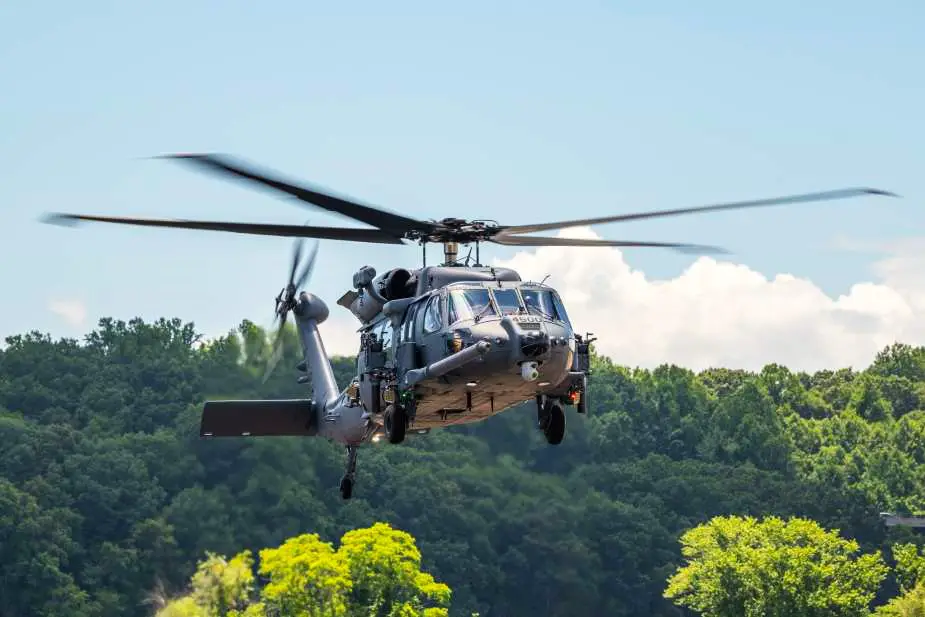Sikorsky Aircraft, a subsidiary of Lockheed Martin, has secured a substantial contract valued at $650 million aimed at advancing the long-term capabilities of the HH-60W Jolly Green II combat rescue helicopter, according to a report by Harry McNeil in Air Force Technology. This project is set to be headquartered in Stratford, Connecticut, which is the hometown of Sikorsky Aircraft, and it is scheduled for completion by September 20, 2030.
Follow Air Recognition on Google News at this link
 As the exclusive dedicated combat rescue platform within the Department of Defense, the HH-60W Jolly Green II Combat Rescue Helicopter builds upon the extensive legacy of US Air Force combat rescue operations (Picture source: Sikorsky)
As the exclusive dedicated combat rescue platform within the Department of Defense, the HH-60W Jolly Green II Combat Rescue Helicopter builds upon the extensive legacy of US Air Force combat rescue operations (Picture source: Sikorsky)
The project's inaugural delivery order, worth $91.2 million, signifies the launch of this endeavor. Sikorsky's primary objective entails the development and seamless integration of various systems into the HH-60W air vehicle and its associated training systems. Noteworthy among these enhancements are the global positioning system anti-jam, mobile user objective system, and degraded visual environment systems. These integrated systems are poised to revolutionize the operational capabilities of the HH-60W, enabling it to navigate intricate environments and challenging conditions with precision. The HH-60W boasts an array of capabilities, including an advanced ARC-210 V/UHF communication system, Rockwell Collins' avionics and mission equipment, and a state-of-the-art glass cockpit. The advancement of these technologies represents a significant step forward in the evolution of search and rescue operations, aligning with the requirements of the US Air Force.
The US Air Force has intentions to procure up to 113 HH-60W helicopters, which will replace the aging HH-60G Pave Hawk medium-lift combat search-and-rescue (CSAR) helicopters that have been in service since 1982.
As the exclusive dedicated combat rescue platform within the Department of Defense, the Jolly Green II Combat Rescue Helicopter builds upon the extensive legacy of US Air Force combat rescue operations and revitalizes the crucial combat search and rescue fleet, equipping US Air Force combat rescue personnel with the most advanced capabilities for their life-saving mission. The HH-60W Jolly Green II, replacing the aging HH-60G Pavehawk, was purpose-built for the Air Force's combat rescue mission, taking into account meticulously evaluated operational requirements.
This next-generation helicopter offers enhanced survivability while retrieving isolated individuals from hostile territories, day or night, in adverse weather conditions, and across a wide range of threat environments. It empowers Air Force Combat Rescue Teams to fulfill their mission of "That Others May Live" and "Leave No One Behind."
The HH-60W Jolly Green II boasts a range of key features and capabilities that enhance its performance and effectiveness:
• Enhanced aerodynamic and hover performance enables the helicopter to operate more efficiently in various conditions.
• An increased main fuel tank capacity, upgraded from 360 gallons to 644 gallons, along with air refueling capabilities, significantly extends its operational range.
• The helicopter is equipped with advanced and seamlessly integrated survivability and defensive systems, ensuring enhanced protection for both the crew and the mission.
• Expanded communications capabilities include the incorporation of two Tactical Datalinks and Intel Receivers, enabling seamless net-centric connectivity, particularly in the joint-all domain environment.
• Higher resolution sensors provide improved situational awareness and targeting precision.
• A larger main cabin offers greater space for personnel and equipment, enhancing its versatility in various mission scenarios.
• Additionally, the HH-60W Jolly Green II features upgraded armor and ballistic protection, further enhancing its survivability in challenging and hostile environments. These combined capabilities make it a formidable asset for combat rescue and search operations.
















